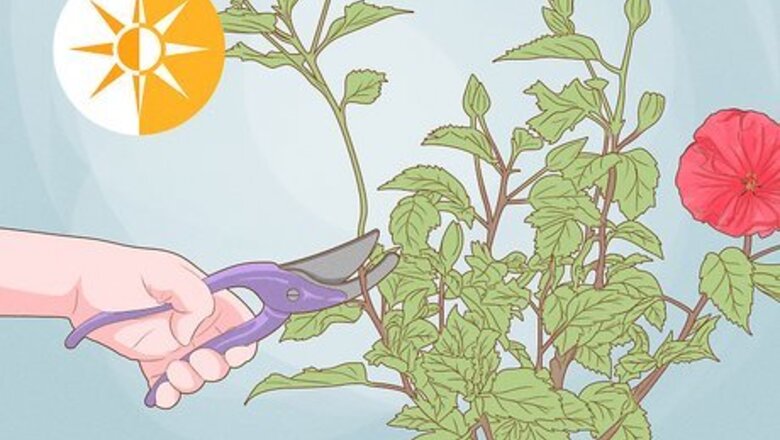
views
- Trim off a stem with smooth green growth and lots of leaves. Remove the leaves except for 2-3 at the top and cut the bottom end diagonally.
- Dip the end of the stem in rooting hormone and drop it in a cup of water. Leave the cutting in indirect sunlight for 4 weeks until roots start to grow.
- Plant the cutting in a 4 in (10 cm) pot using hibiscus topsoil. Put the pot in an area with indirect sunlight for 2 weeks, then move it into direct sunlight.
Taking Cuttings
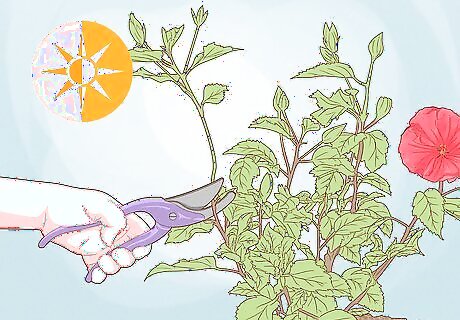
Wait until the summer to propagate hibiscus. Take cuttings in the middle of summer when hibiscuses experience the most growth. This will give you a better chance of successfully propagating all of the cuttings. If you wait until the late summer, the stems will be more mature and woody, and they might take longer to root.
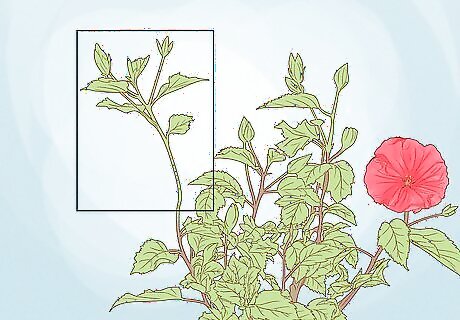
Select branches with smooth, green growth. At the ends of the branches, look for stems that are smooth and dark green with plenty of leaves. A healthy hibiscus will have plenty of new growth to choose from. It's okay to take cuttings from stems that are slightly brown or darker green, but they must be rooted in topsoil to be successful.
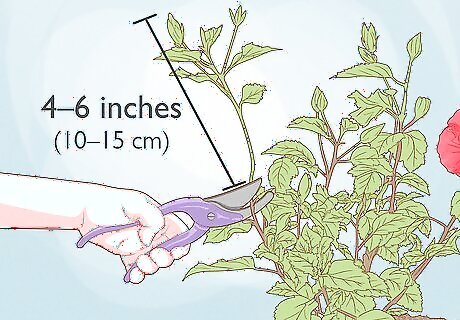
Use pruning shears to cut stems from the new growth. Using sharp, clean pruning shears, cut the green branches away from the plant at lengths of 4–6 inches (10–15 cm). Carefully collect them in a box or bag for safekeeping while you work. Avoid taking too many cuttings from one plant, as this can cause the parent plant to look bare or stop growing altogether. Aim to take no more than 5-6 cuttings at one time. After taking the cuttings, wipe the pruning shears with a clean, damp cloth to remove any bacteria and prevent rusting.
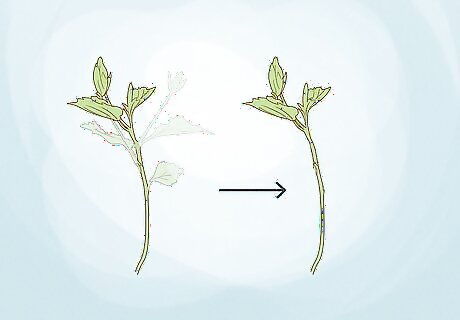
Remove all of the leaves except for 2-3 at the top of the cutting. Removing leaves from the cuttings helps to improve oxygen levels as the plants are growing. Gently snip all of the leaves off with the pruning shears, leaving only 2-3 leaves at the very top of the stem. If the remaining leaves are very large, cut them in half horizontally to avoid wilting. You should never pull leaves off of the cuttings, as this can cause damage to the fibers in the stem, making growth more difficult.
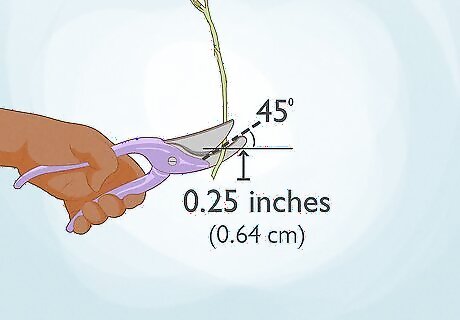
Make a diagonal cut at the bottom of the branch to encourage growth. Using the pruning shears, cut 0.25 inches (0.64 cm) off of the bottom of the stem at a 45-degree angle. This will help prepare the stem for rooting. If possible, make the cut through an area where a leaf was growing from the stem. These spots, called “eyes” contain natural growth hormones.
Rooting the Cuttings
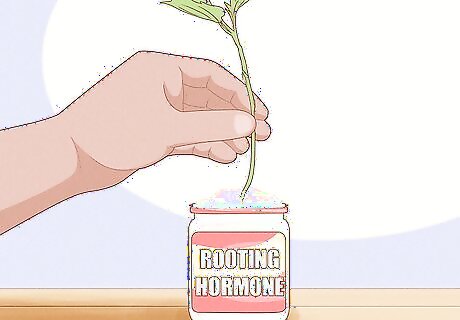
Dip the end of the stem in rooting hormone. Rooting hormone is a powder or liquid that encourages the branch to grow new roots from young cells. There are a plethora of different kinds of rooting hormones available, but many gardeners like to use honey. Carefully coat the end of the stem and transfer the stem to the rooting medium. Try to avoid touching the end of the cutting with your hands, as they can transfer oils onto the stem that prevent the rooting hormone from working.
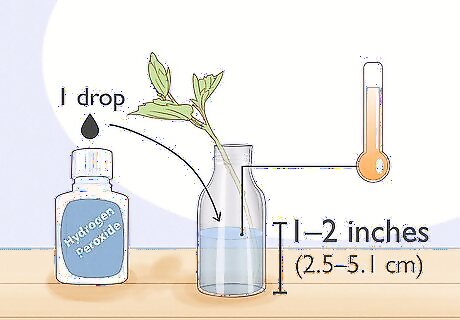
Put the cuttings in water if you want to monitor the root growth. This method is best for first-time propagators, because it allows you to watch the roots as they grow. Fill a clear bottle with 1–2 inches (2.5–5.1 cm) of warm water, and add a drop of hydrogen peroxide. Carefully place the cuttings into the bottle, making sure that the leaves don't touch the water. Remember to change the water out once per week. Simply remove the cutting from the water, pour out the water, and replace it with new water to prevent microbes from forming. Using this method, you'll be able to monitor the growth of the plant. After about a week, you will see white bumps, and after about 4 weeks, you should see roots forming. You can use tap water as long as you don't have a water softener. Softened water has too much sodium for hibiscus to propagate successfully.
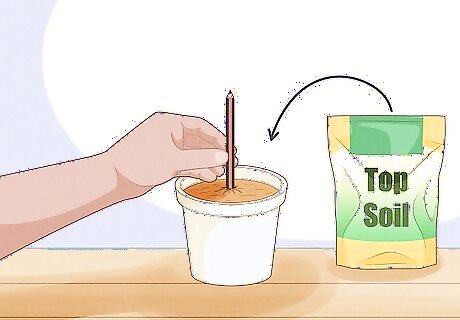
Place the stems in topsoil to root if they are more mature, woody cuttings. If you took your cuttings later in the season, they might be a darker green color and have some bark growing on them, which can make rooting more difficult. Prepare a container with 2–3 inches (5.1–7.6 cm) of topsoil, and use a pencil to make holes for the cuttings. Gently place the cuttings into the holes and press the soil around them. Don't push the stems into the soil without making a hole first because the grittiness of the dirt can damage the stem and remove the rooting hormone.
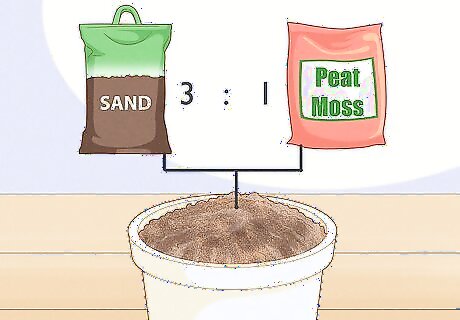
Root the cuttings in sand and peat moss if they were taken from tropical hibiscus. Make a mixture of 3 parts sand and 1 part peat moss in a container. Water the potting medium evenly, and use a pencil to make holes for the cuttings. Then, gently lower the cuttings into the holes and press the soil around them. After the cuttings are in the box, water them again to prevent them from drying out too quickly.
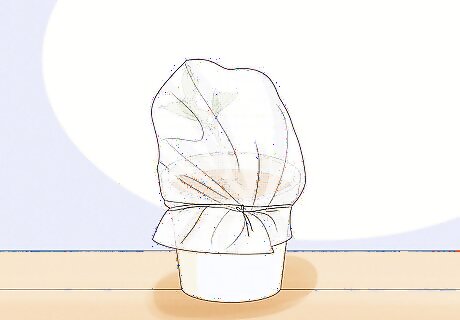
Cover the cuttings with clear plastic and place them in indirect sunlight. Gently drape transparent clear plastic over your cuttings to trap moisture, like a plastic bag or plastic wrap. With the plastic over them, place them in a bright area out of direct sunlight. The plants should remain in the indirect sunlight all day for successful propagation. Leave the plastic slightly open at the bottom or cut vents into the top to allow for airflow over the cuttings as they grow.
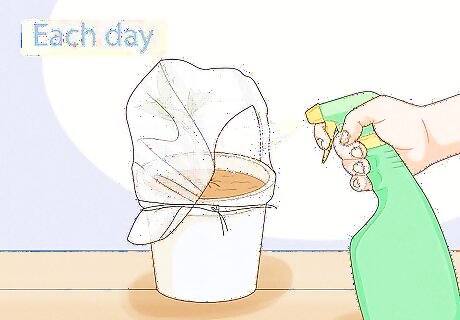
Mist planted cuttings each day to keep the soil moist. Hibiscus plants love water, and keeping the stems moist will help them form roots. A light misting every day will keep the rooting medium damp, but not wet. If you notice that the soil is wet, remove the plastic bag and reduce watering to every other day. Overwatering can cause root rot. If the soil dries out quickly, give the cuttings more water during the day. If the problem persists, move the container to an area that is slightly cooler or receives less sunlight.
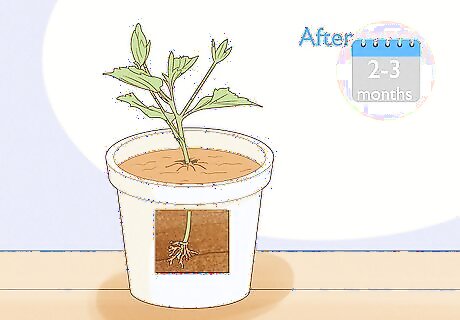
Wait 2-3 months for roots to form from the cuttings. When the roots are hard enough for transplanting, you will also notice new leaves forming at the top of the stem. Carefully remove the cuttings from the soil to transplant them into pots. For cuttings in water, wait to transplant until the roots change color from white to light tan.
Transplanting Hibiscus Cuttings
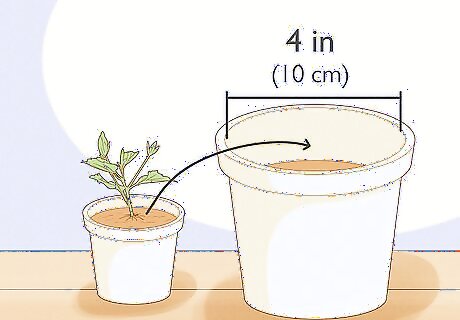
Fill a 4 in (10 cm) pot with hibiscus topsoil. Hibiscus plants need a pot of their own to grow in, so plan on using 1 pot for each rooted cutting. You can purchase hibiscus soil at some hardware stores, as well as at nurseries. Pour the soil into the pot with about 1 inch (2.5 cm) of space at the top. If you can't find specialty hibiscus soil, you can use any high-quality topsoil. Mix the topsoil with 4 parts soil to 1 part sand or peat moss to make it slightly less rich.
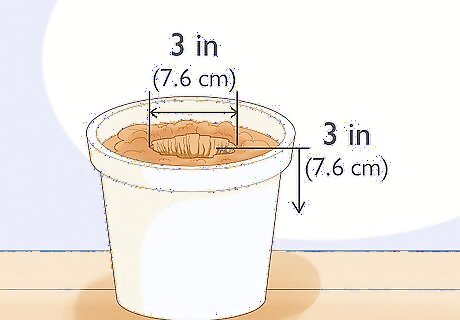
Make a hole that is about 3 in (7.6 cm) wide and 3 in (7.6 cm) deep. Using your hands or a garden spade, make a space in the soil to plant the cutting. Be sure to account for the size of the roots of the plant, which will need to fit into the hole. When in doubt, make the hole slightly larger than necessary and fill it in will more soil later.
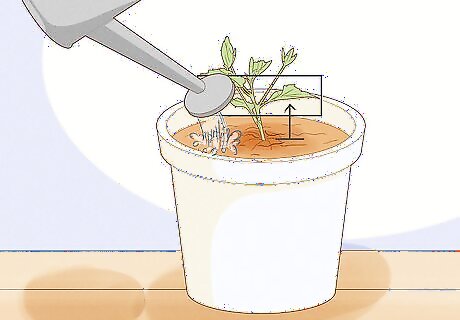
Plant the stem with the leaves just above the soil and water thoroughly. Lower the stem into the soil, being careful not to damage the fresh roots. Position it so that the leaves are above, but not touching, the topsoil. Then, fill the hole with soil and water the area thoroughly. If your leaves are touching the soil, they can begin to rot. Depending on the size of the cutting, you may need to add a small amount of soil to the bottom of the hole to ensure that the plant isn't buried too deep.
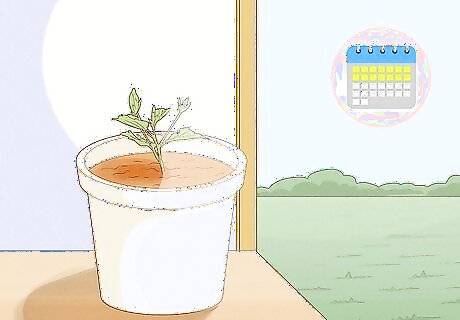
Place the pot in an area that receives indirect sunlight for 2 weeks. After planting, place the pot in a bright area away from direct sunlight as the roots become established in the soil. Leave the plants in the indirect sunlight all day for 2 weeks. Once 2 weeks have passed, move the plant to direct sunlight to jumpstart growth of the stem and leaves. Hibiscus plants love the sun, so once the roots are established, leave the plant in the sun, rotating it every few months to get even sunlight.
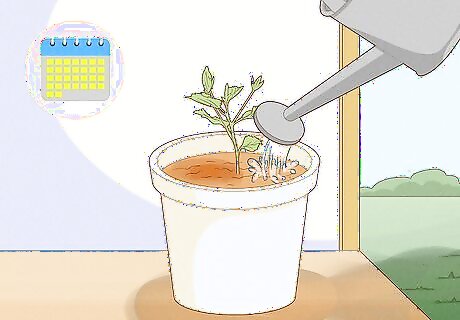
Water the hibiscus daily as it grows. To make sure you aren't giving your hibiscus too much water, feel the soil about 1.5 hours after you water the plant. It should be slightly moist, but not wet. If it's wet, limit watering to every other day to avoid standing water in the pot. In the winter, water the hibiscus with warm water around 95 °F (35 °C) to encourage growth.



















Comments
0 comment